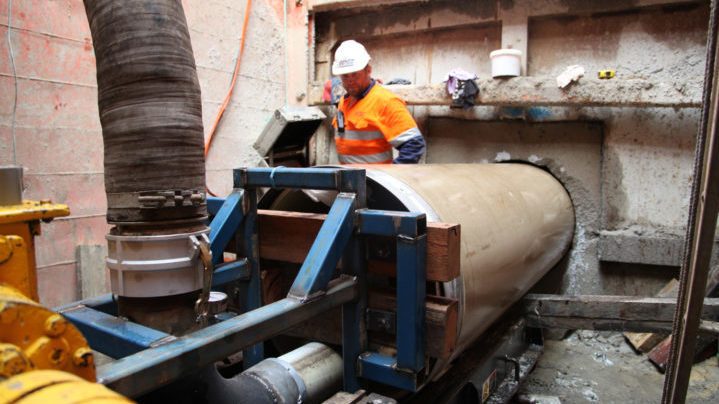When it comes to trenchless installations in urban areas, one of the key factors that needs to be taken into account is existing critical infrastructure. One wrong move can cause costly damage, increasing project time and costs. Here, Stuart Harrison, Managing Director of Edge Underground, looks at how microtunnelling offers a solution to the problems of pipeline installations in areas near critical infrastructure such and buildings and underground utilities.
Ground movement
One of the problems associated with tunnelling in urban environments is the risk of the ground moving in the vicinity of the installation taking place.
“Whenever you have deep excavations there’s a risk that the ground will move in the area because the ground pressures become out of balance, resulting in both the movement of ground and existing infrastructure,” Mr Harrison said.
“There’s a lot of potential damage to the actual existing infrastructure or utilities by putting a new deep pipeline in.”
Edge Underground use the Vermeer AXIS microtunnelling machine to perform keyhole pipeline installations, which greatly reduces the risk of ground movement.
“With keyhole installations we can install a pipe through one small incision, rather than having to tear the whole street open to do it, or the whole area,” Mr Harrison said.
“As we only remove the ground where the pipe needs to go, the surrounding ground is left in harmony and existing infrastructure is left almost untouched.”
Reducing impact on the ground
Mr Harrison said microtunnelling also mitigates the chances of sinkholes forming in the future, which could cause structural damage or injure someone.
“It is not uncommon to see things like sinkholes, and if you have a look at a lot of those instances it’s the result of a pipeline being installed – possibly not correctly – and the ground being disturbed around it. It acts like a venturi and it syphons the ground out from underneath. When this happens the slightest bit of pressure can cause the ground to collapse.
“These instances are commonly found around water pipes which have been leaking. As it leaks the water finds its way in, the ground moves in with it, and you end up with a big void.”
Mr Harrison said as microtunnelling doesn’t require the ground to be filled back in around the pipe after installation, this doesn’t become a problem.
“With microtunnelling, two things are happening, you’re not disturbing every layer of ground, and you’re only coring out the ground needed to put the pipe in. All those other layers are unaltered.
“Another advantage is that microtunnelling often requires a jacking pipe, which is less likely to have the joint issues that open cast pipes have. The reason being is if you excavate into the ground, and you lay a pipe, you make a new bed, then you’ve got to put all the material around the pipe to make sure it’s not moving.
“Then you’re trying to layer up and compact, and rebuild up the surface; essentially the whole thing has been totally interfered with, so there’ll be a settling period. During that settlement period things will move. As they move, everything becomes potentially structurally less sound than what it was.
“When you core a pipe through the ground like during pipe jacking, the ground is still the guide for the pipe but it is unaltered, staying in its position it’s been in for forever and a day. The pipes just sit snug in that ground.
“The longer-term benefits of microtunnelling will be seen over time, but this is certainly what we’re finding.”

